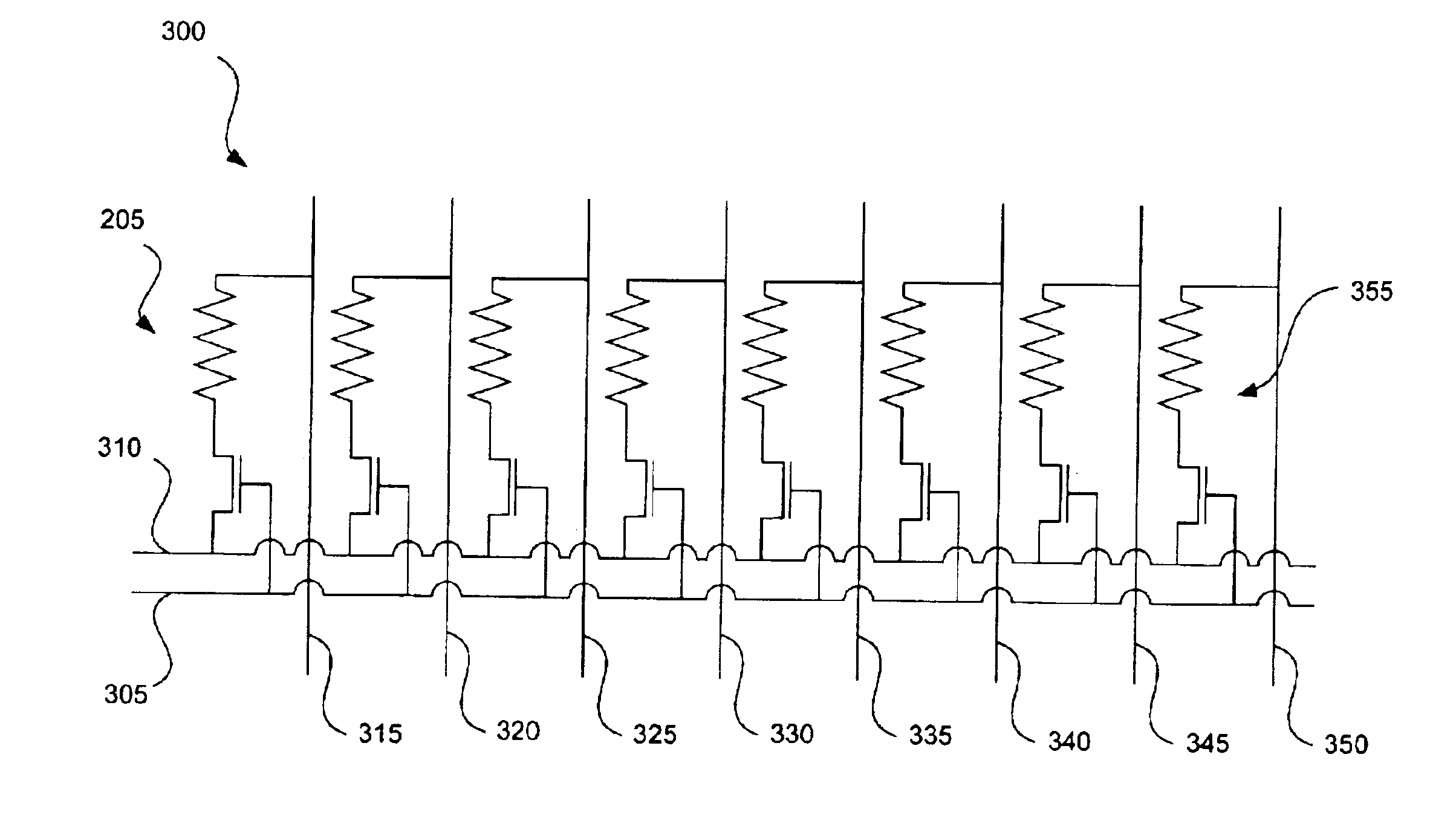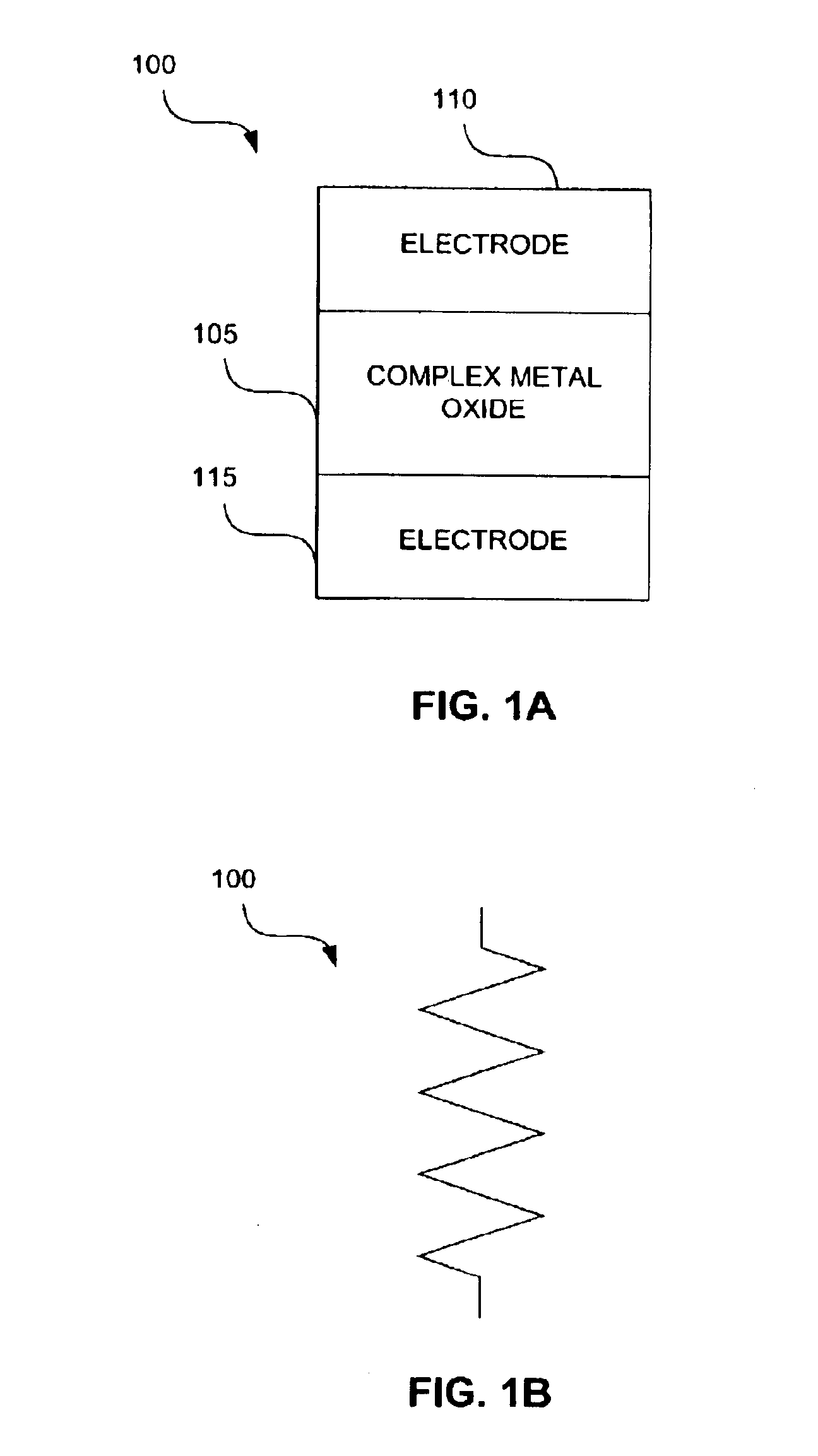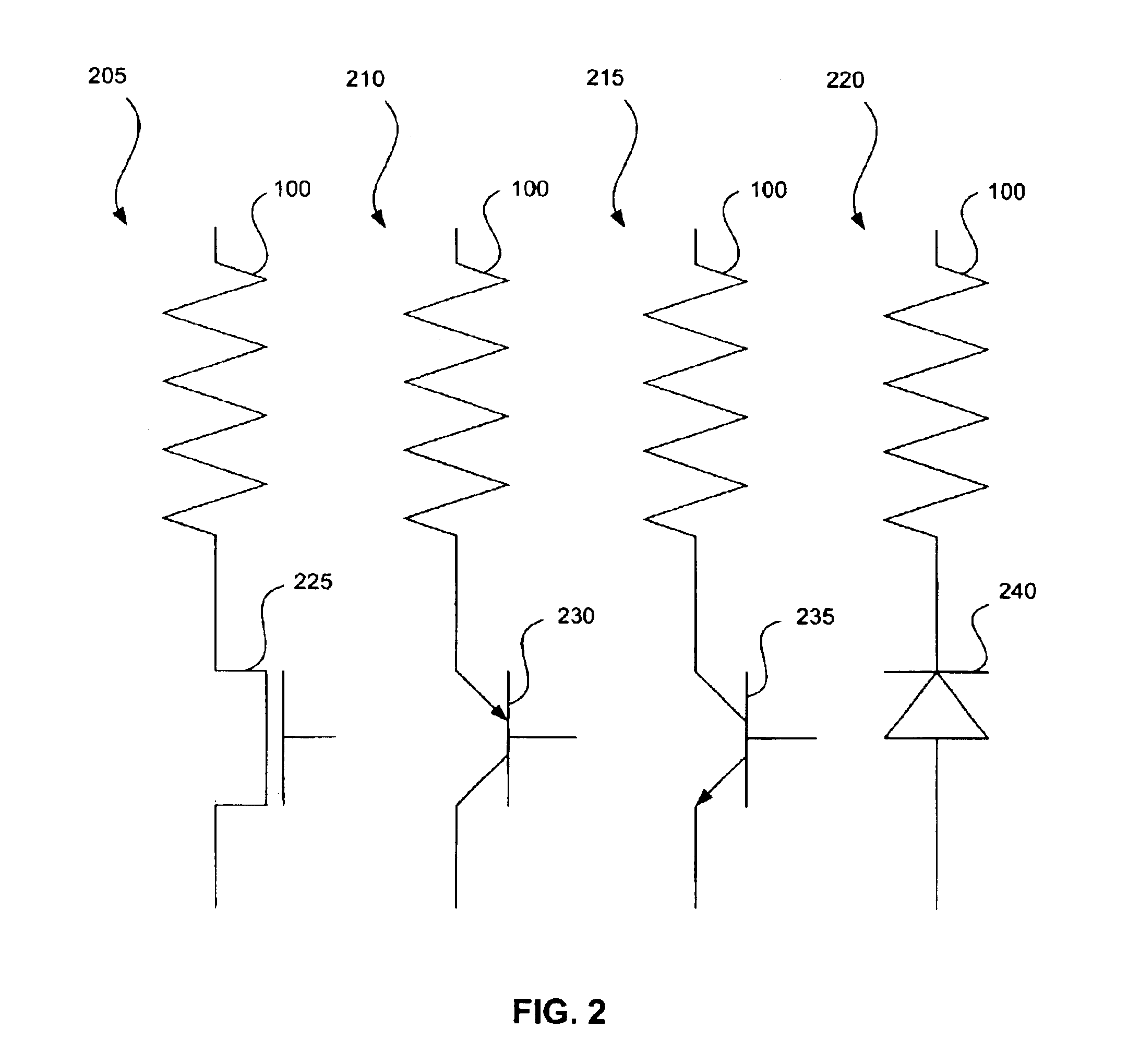Memory array of a non-volatile ram
a non-volatile, memory array technology, applied in the field of memory, can solve the problems of resistance-changing properties of certain cmos, which have not yet been implemented in a commercially viable memory produ
- Summary
- Abstract
- Description
- Claims
- Application Information
AI Technical Summary
Benefits of technology
Problems solved by technology
Method used
Image
Examples
Embodiment Construction
In the following description, numerous specific details are set forth to provide a thorough understanding of the present invention. It will be apparent, however, to one skilled in the art that the present invention may be practiced without some or all of these specific details. In other instances, well known process steps have not been described in detail in order to avoid unnecessarily obscuring the present invention.
The present invention generally allows for multi-resistive state materials to be used as memory elements in a non-volatile RAM memory. Multi-resistive state materials generally require high temperature processing, which limits the types of material that can be used prior to the multi-resistive state material deposition. A non-volatile RAM chip that only uses materials that can withstand the high temperature processing below the multi-resistive state material is free to use regular materials above the multi-resistive state material, since those materials are not subject...
PUM
 Login to View More
Login to View More Abstract
Description
Claims
Application Information
 Login to View More
Login to View More - R&D
- Intellectual Property
- Life Sciences
- Materials
- Tech Scout
- Unparalleled Data Quality
- Higher Quality Content
- 60% Fewer Hallucinations
Browse by: Latest US Patents, China's latest patents, Technical Efficacy Thesaurus, Application Domain, Technology Topic, Popular Technical Reports.
© 2025 PatSnap. All rights reserved.Legal|Privacy policy|Modern Slavery Act Transparency Statement|Sitemap|About US| Contact US: help@patsnap.com



